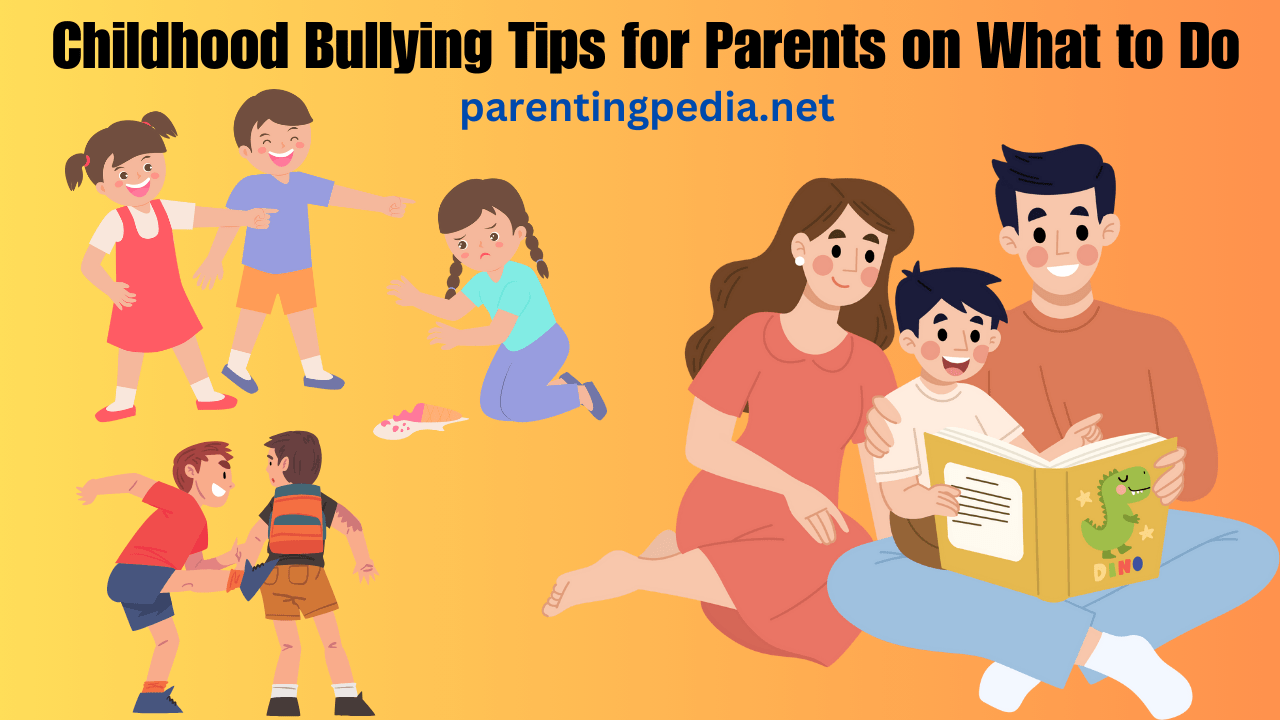Discover effective tips for parents on how to deal with childhood bullying. Ensure your child’s safety and well-being with open dialogue and support. Childhood bullying is a pervasive issue that affects school students across the globe.
It’s crucial for parents to know how to address bullying, whether their child is being bullied, bullying others, or simply witnessing bullying situations.
In this blog post, we will provide you with practical tips for parents to deal with bullying and promote a safe and supportive environment for their child. Let’s dive in.
Bullying Behavior
Before we delve into the tips for parents, it’s essential to comprehend what bullying behavior entails. Bullying involves aggressive actions or words that are intended to hurt, intimidate, or assert dominance over another person. This behavior often creates a power imbalance between the bully and the victim.
Bullying can take various forms, including physical bullying, verbal abuse, social exclusion, and cyberbullying. It can happen at any stage of a child’s development, from elementary school to high school, and sometimes even in adulthood. To address bullying effectively, parents must recognize the signs and understand the dynamics involved.
Tips for Parents on Dealing with Bullying
1. Talk to Your Child
It’s important to know how to open a dialogue with your child about bullying. Create a safe and non-judgmental space for them to share their experiences and feelings. Ask your child about their day and any concerns they might have.
2. Encourage Your Child to Report Bullying
Let your child know that if they experience or witness bullying, they should report it to a trusted adult, such as a teacher, school counselor, or you as their parent. Reporting is a critical step in addressing bullying.
3. Teach Your Child to Be Assertive
Empower your child with the skills to respond assertively to bullies. Encourage them to speak up and tell the bully to stop the hurtful behavior, while maintaining a confident and composed demeanor.
4. Work with the School
If your child is being bullied at school, it’s important to remember that bullying occurs not only in the classroom but also on school premises. Reach out to the school counselor or an appropriate contact at the school to address the issue collaboratively.
5. Know the Signs
Familiarize yourself with the signs that may indicate your child is experiencing or involved in bullying. Behavioral changes, withdrawal, and unexplained physical or emotional injuries can be signs that something is amiss.
6. Remind Your Child of the Importance of Reporting
It’s crucial to remind your child that reporting bullying is not only about seeking help but also about preventing it from happening to others. They can be a part of making the school environment safer.
7. Identify Bullying Online
In today’s digital age, bullying or cyberbullying can happen through various online platforms. Teach your child how to identify online bullying and how to respond effectively, such as blocking the aggressor and preserving evidence.
8. Teach Your Child to Take Action
Encourage your child to be an upstander rather than a bystander. If they witness bullying happening to someone else, instruct them to take steps to help, whether by reporting it or offering support to the victim.
9. Understand the Effects of Bullying
Recognize that the effects of bullying can be profound, leading to mental health issues and, in extreme cases, even suicide. Stay vigilant about your child’s emotional well-being and seek the help of a mental health professional if needed.
10. Advocate for Your Child
Be your child’s advocate. If the school is not responding adequately to the bullying situation, familiarize yourself with relevant laws and policies and use them to ensure your child’s safety.
FAQs on Childhood Bullying
Q1: How can I discover if my child is being bullied at school?
A1: Look for signs like unexplained injuries, changes in behavior, and a sudden reluctance to attend school. Open communication with your child is key.
Q2: Are some children more likely to be victims of bullying?
A2: Yes, children with disabilities or those who appear different from their peers may be at a higher risk of being bullied. It’s important to take extra steps to protect them.
Q3: What can parents do to help prevent bullying?
A3: Parents can help prevent bullying by educating their children about bullying, teaching them to take action when they witness it, and fostering a safe and open environment for communication.
Q4: How can I make sure my child knows what to do if they witness bullying?
A4: Encourage your child to talk to someone they trust if they see bullying, whether it’s a teacher, school counselor, or you as their parent.
Q5: What if my child is the one bullying others?
A5: If your child is bullying others, it’s essential to address their behavior promptly. Open a dialogue with your child, seek professional guidance if necessary, and ensure they understand the consequences of their actions.
Conclusion
Childhood bullying is a serious issue that requires proactive measures from parents. By understanding the various aspects of bullying behavior, recognizing the signs, and following the tips outlined in this blog post, you can better protect your child and create a safe and nurturing environment for their development. Remember that your involvement and support are crucial in addressing and preventing bullying, which can have far-reaching effects on children’s mental health and well-being. It’s important to take action and ensure that no child has to endure the pain and trauma of bullying.
Remember, the greatest reward of parenting lies in watching
your children soar with love and confidence.
Till then keep smiling and be happy 😊
Worth Reading 👇
- Best of the web when you’re teen asks for non-alcoholic beer and more
- Choosing the Best Musical Instrument for Children to Learn
- Finding Balance Becoming a Screen Smart Family
- When Life Sucks: A Conversation with Psychiatrist and Comedian Dr. Jo Prendergast
- Getting kids to talk about their feelings
- The case for banning corporal punishment of kids
- How Parents Can Help Kids Make Good Friends
- 13 Reasons Why? What Every Parent Needs to Know
- Why meditation should be taught in schools
- How to Get Your Teenager Off the Couch
- how to be a best and fairest sporting parent from nathan burke
- 10 Tips to Help Your Teen Out of the Procrastination Trap
- Is your child being bullied, how parents can help?
- Taking care of emotions a guide for parents and their kids
- Getting Involved Parents Making a Difference
- How to manage your child’s self-criticism

